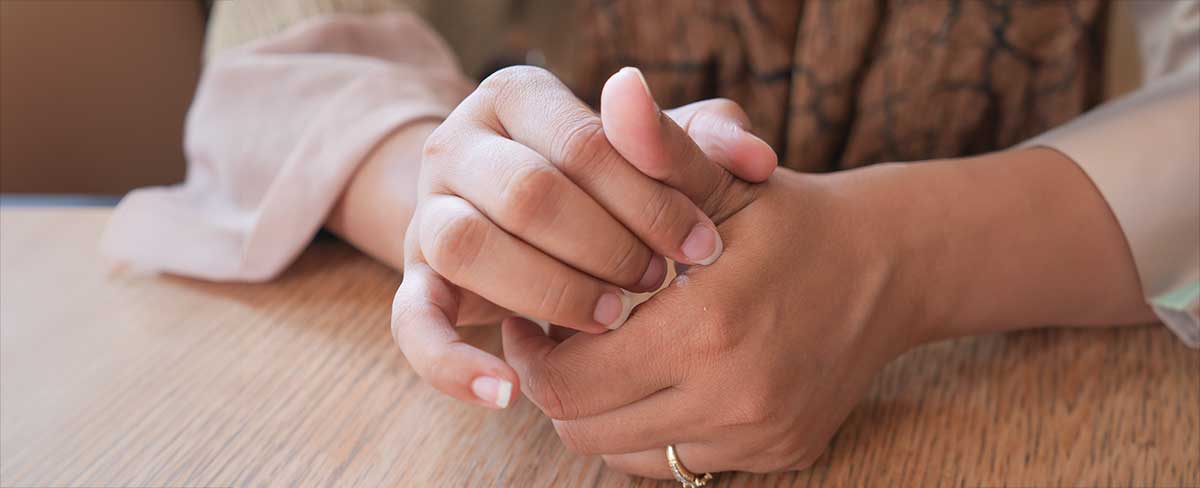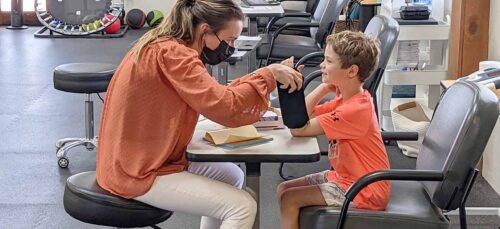First carpometacarpal osteoarthritis (CMC OA), also known as basilar joint arthritis or thumb arthritis, is a degenerative joint disease that causes wear and tear to the cartilage of the thumb. CMC OA can lead to pain, stiffness, and reduced function with daily activities, including those requiring pinching.
What are the symptoms of CMC OA (thumb arthritis)?
Symptoms of CMC OA include:
- Pain at the base of the thumb, especially with movement or gripping
- Swelling and tenderness around the joint
- Stiffness, particularly in the morning or after periods of inactivity
- Weakness in the thumb, making it difficult to perform tasks that require fine motor skills
What causes thumb arthritis?
Several factors contribute to the development of Thumb CMC OA, including:
- Aging: Wear and tear on the joint over time can lead to degeneration
- Genetics: Some individuals may have a genetic predisposition to developing osteoarthritis
- Overuse: Repetitive thumb movements or activities that strain the joint can accelerate wear and tear
- Trauma: Injuries to the thumb or hand can increase the risk of developing CMC OA.
Who is most at risk for thumb CMC OA?
While thumb CMC OA can affect anyone, certain factors may increase the risk:
- Age: The risk of osteoarthritis increases with age, particularly in individuals over 40
- Gender: Women are more likely to develop CMC OA, possibly due to hormonal changes and joint laxity
- Occupation: Jobs that involve repetitive thumb movements or manual labor may increase the risk
- Genetics: A family history of osteoarthritis can predispose individuals to develop CMC OA
How do you diagnose thumb arthritis?
Diagnosing Thumb CMC OA typically involves a physical examination, medical history review, and imaging tests such as X-rays.
What does treatment for CMC OA look like?
Treatment options vary depending on the severity of symptoms but may include:
- Pain management with medications or injections
- Splinting to support the joint and reduce strain
- Physical & occupational therapy exercises to improve strength and range of motion, and to learn adaptive techniques for daily activities
- Surgery in severe cases to remove damaged tissue or stabilize the joint
How can physical and occupational hand therapy help?
Physical and occupational hand therapy play crucial roles in managing Thumb CMC OA symptoms and improving hand function. These therapies focus on:
- Pain relief: Through techniques like therapeutic exercises, manual therapy, and modalities such as ultrasound or heat therapy
- Joint protection: Making custom orthoses (or recommending over-the-counter braces) to support the joint during activities
- Strengthening: Targeted exercises to strengthen the muscles around the thumb joint, enhancing stability and function.
- Range of motion: Gentle stretching and mobilization techniques to improve flexibility and reduce stiffness.
- Adaptive strategies: Learning alternative methods and tools for performing daily tasks to reduce strain on the affected joint.
Conclusion
Thumb CMC OA can significantly impact hand function and quality of life, but with early diagnosis and comprehensive therapy, individuals can effectively manage symptoms and maintain functional independence. By understanding the condition, identifying risk factors, and utilizing physical and occupational hand therapy interventions, individuals can take proactive steps towards improving thumb joint health and overall well-being.
If you are struggling with pain from CMC OA, schedule an evaluation with one of our certified hand therapists today.

Rachel Locke
OTR/L, CHT, C/NDT
Certified Hand Therapist




